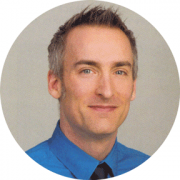All Research

My research deals with harmonic analysis and its interactions with partial differential equations of wave and Schroedinger type. Much of my work involves finding effective ways to represent solutions to these equations and understanding the oscillatory integrals that appear as a result. In particular, I am interested in the development of regularity and norm estimates for solutions that can be obtained this way. This includes Strichartz, local smoothing, and squarefunction inequalities, which are all families of space-time integrability (L^p) estimates. They are important for various nonlinear equations and can also have applications to eigenfunction problems.
Most recently, my work has focused on establishing these inequalities for solutions over domains with a boundary. Here the boundary conditions can influence the development of waves and affect the flow of energy. Understanding this phenomena often involves a connection with the field of microlocal analysis. Here one studies waves by carefully localizing them both in space and in direction of propagation. One effective method in this direction is to represent waves as superpositions of "wave packets", approximate solutions which are highly concentrated in both space and in frequency. Wave packet methods continue to be influenced by ideas from both microlocal and harmonic analysis.

Emeritus Professor
My research interests range over a fairly broad part of modern differential geometry. It interfaces with the theory of Lie groups and both algebraic geometry and algebraic topology. Recently there have been two main threads. The first involves the study of the topology of moduli spaces of holomorphic maps, the so-called sigma-models, and of the moduli spaces of instantons.
The second uses contact geometry together with Lie group theoretical methods to give explicit constructions of Einstein manifolds of positive scalar curvature, and then to study the topology of such manifolds. Very recent work uses methods of algebraic geometry, more specifically Mori theory, to construct Einstein metrics on 5-manifolds, as well as homotopy spheres in all odd dimensions. This work appears in my monograph Sasakian Geometry with K. Galicki published by Oxford University Press
My earlier work was also two-tiered. The first involved group representation theory applied to problems of Mathematical Physics, in particular, to the problem of separation of variables of the partial differential equations that appear in Mathematical Physics. The second used Lie group methods to study complex geometry with special applications to general relativity.

I am interested in number theory and algebraic geometry. My recent work is devoted to establishing an arithmetic analogue of the theory of (ordinary/partial) differential equations. In the (ordinary) arithmetic theory the ``independent time variable'' t is replaced by a fixed prime integer p. Smooth real functions, x(t), are replaced by integer numbers, a, or, more generally, by integers in various (completions of) number fields.
The derivative operator on functions x -> dx/dt is replaced by a "Fermat quotient operator'' d which, on integer numbers, acts as da:=(a-a^p)/p. For details see my research monograph ``Arithmetic Differential Equations", Math. Surveys and Monographs 118, AMS, 2005.

I design and analyse numerical methods for multi-physics, multi-rate partial differential equations. In particular, I focus on Adjoint based A posteriori error estimation to quantify the error in a quantity of a interest in a numerical solution. My research is interdisplinary and I enjoy working with mathematicians, engineers and computer scientists. I actively work with Dr. Eric Cyr and Dr. John Shadid from Sandia National Labs and many of students do their internships at the national labs.
My recent interests include:
- Parallel-in-time integration
- Uncertainty quantification
- Stochastically perturbed domains
- Reduced order modeling
- Least-Squares finite element methods
- Poisson-Boltzmann and Poisson-Nernst-Planck equations
For more information, see my personal webpage.
Professor Christensen's research interests are in models that employ linear mean structures and in Bayesian methodology. He contends that this includes virtually all of statistics.
My research focuses on statistical applications in genetics and evolutionary biology. Particular areas have included coalescent theory and its applications, phylogenetics, and human genetics.

Emeritus Professor
I'm an Applied Mathematician actively involved in Dynamical Systems, Probabilistic Methods, Stochastic Processes, Perturbation Theory, and Scientific Computing. I have worked on both fundamental and formal aspects of averaging methods in both deterministic and stochastic dynamical systems, but always with an eye for proofs of asymptotic validity. Our main current focus is on problems defined by mean field Vlasov, Vlasov Fokker-Planck and Vlasov-Maxwell systems. The applications I have worked on are related to Beam Dynamics in Modern Particle Accelerators and Particle Channeling in Crystals .
For example, we are investigating coherent radiation and space charge in the context of charged particle bunches evolving under the mean field Vlasov-Maxwell dynamics. This involves both analytic and numerical (e.g., meshless) approaches and the development of fast numerical algorithms in a high performance computing environment. In addition, we are beginning a study of the probabilistic Large Deviation Theory as a tool to study large N particle dynamics and the above mean field approximations.

(updated 20160107)
My research interests focus on differential geometry and geometrical analysis. Recently I studied the geometrical flows in Kaehler/Sasaki geometry.
